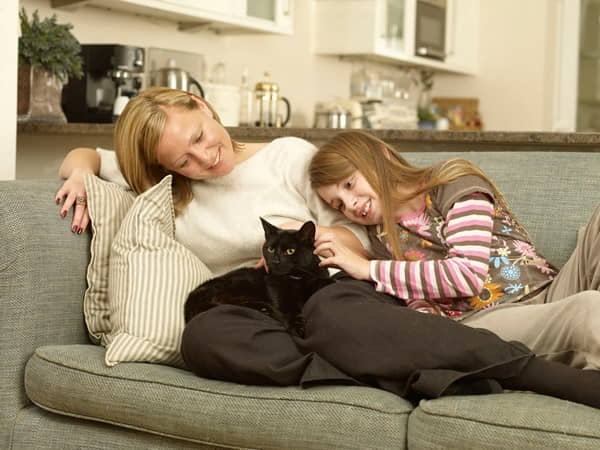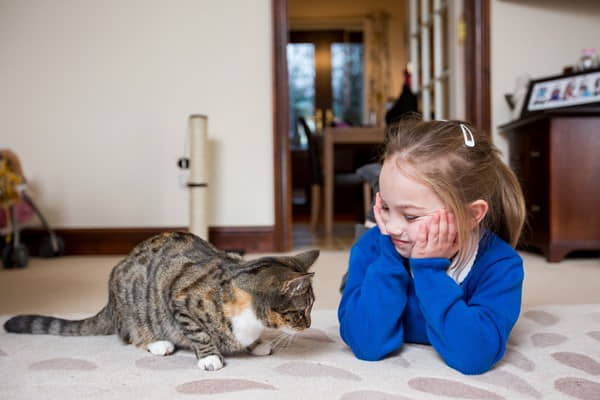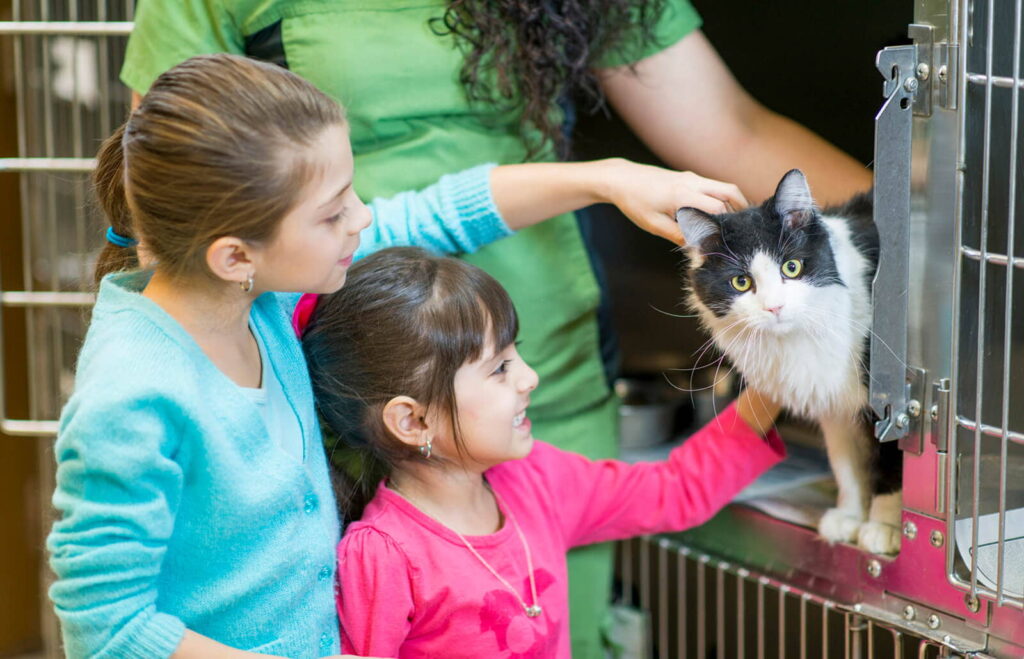Jacque Lynn Schultz, C.P.D.T., Companion Animal Programs Adviser. National Outreach
The kids have been clamoring for a cat. You’ve held them off for as long as humanly possible, but now you must decide whether or not to make the twenty year commitment to a new feline friend. To dog people, taking on a cat seems like no big deal – no house training, numerous daily walks or obedience classes. But if you are a novice at animal care-consuming, hair on the furniture, paw prints on countertops and kitty games at 3 A.M. – not to mention litter box training and daily maintenance – can take some getting used to. The feline diversity residing in local shelters and rescue groups ensures you will find a kindred spirit. If you are considering adopting a kitten, factor in plenty of time for socialization and supervision to ensure that the end result will be a well-adjusted adult cat.

Picture Purrfect
Cats had only one function throughout the centuries: vermin control. Only in the last 1 hundred years has selective breeding caught on – synonymous with the rise of the cat as a companion. Most purebred cats fall into one of the following three groupings based on physical characteristics:
- The natural breeds – American and British shorthairs, Persians, Maine coon cats were developed in cold climates. They have long, thick coats; heavy, cobby (square) bodies, and are the most sedate group when it comes to energy level.
- The semi-foreigns – Russian blues, Abyssinians, ocicats are an in-between group whose body shapes are leaner and more muscular than the natural breeds. They have slightly oval eyes and their heads are moderately wedge-shaped. Their activity level is usually moderate with some high-energy exceptions like the Abyssinian.
- The Orientals – Siamese, Burmese, Cornish rexes originated in warmer climes; they carry little body fat and lighter coats. Almost everything about them is elongated – legs, tails, ears and bodies – to allow more surface area for efficient cooling. These cats are the most active and talkative.

Still, less than 10 percent of the world’s cats, both in and out of shelters, are purebred. The majority – common house cats – have charmed their way into becoming the number-one most popular pet in the United States.
When you have made the decision to commit to a cat, hop on the internet and visit www.petfinder.com or head to your local animal shelter, where an array of felines resplendent in tabby stripes, calico patches, solids and tortoiseshell patterns awaits. Time must be found in hectic schedules for grooming, feeding and interactive play. Many shelters vaccinate, de-worm and test for feline leukemia before putting up cats for adoption. Some shelters spay/neuter before adoption as well. Ask yours for specifics on what is included in the adoption package.

Searching for Mr. Right
Before facing cage after cage of homeless cats, consider your needs and expectations. If yours is a full-time working household, I recommend passing up kittens and adolescents (less than eighteen months old) in favor of a more low-key adult whose energy needs will be easier to meet. If you are a novice cat owner, stay away from “excessive” cats – extremely shy, aggressive or demanding – for they may provide too great a challenge for your first experience. Your become best is the friendly, outgoing cat, who nudges an outstretched finger offered through the cage bars and who nuzzles and purrs when you hold him in your arms. This profile is really a particularly good choice for families with children younger than seven years of age.

Is coat color or pattern important? By all means, choose a cat who attracts you, but remember that the gorgeous calico hiding at the back of her cage may well go into prolonged hiding once she is released into your home. A cat who is social and relaxed at a shelter usually has the aplomb to meet the stresses that life throws her way. Consider the whole cat, not just one element.
A cat in your life can add warmth, humor and satisfaction. A cat can teach your child empathy for others while keeping her secrets. If you can make the commitment, a cat is waiting to enhance your life in ways only a kindred spirit can.
Wondering about Are Cats Dangerous? Check it out on our latest post!


0 Comments